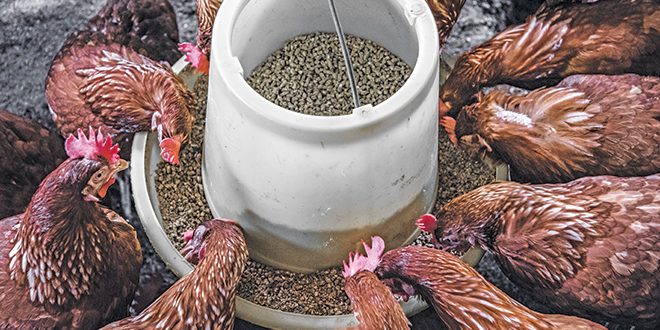The global poultry feed market is projected to register a compound annual growth rate of 4.1 percent during the forecast period 2021-2026. The COVID-19 pandemic and restrictions aiming to contain it, have led to the shutdown of poultry feed companies across the globe in the initial phase, which in turn resulted in the shortage of feed for livestock farmers. Hence the initial COVID-19 lockdown caused disruptions in the logistics system and affected the supply of poultry feed across the globe.
However, the poultry feed market growth has increased in the later phases, due to exemptions from lockdown restrictions and an increase in poultry meat consumption. The increasing demand for poultry meat products is the major factor driving the market. The growing industrial livestock production and the developing demand for organic feed are two other factors augmenting the growth of the market studied.
As poultry requires 60 percent protein, 13 percent fat and 3 percent calcium, the required nutrient content is met majorly by poultry by-products and fish meal. Approximately 50 percent of the live market weight of ruminants and 30 percent of poultry is the by-product. These by-products are rendered, ground and available as a feed source for poultry.
Poultry meat is a growing trend on the global front and has increased from 119,205.21 metric ton in 2018 to 120,884.63 metric ton in 2019. Thus, the demand for compound feed is projected to increase over the forecast period to meet the specific feed requirements.
Increasing demand for poultry meat products
The poultry sector is one of the fastest-growing meat sectors, owing to the increase in poultry meat consumption. Growing the productivity of poultry is critical to feeding the expanding global population.
However, high feed prices are acting as a restraint to the poultry feed market. The global poultry meat production is growing, with two-thirds of the increase originating in the Asia-Pacific region. The US consumption of poultry meat is also increasing, as it is considered a convenient product that is easily available in the market.
In China and India, the demand for livestock products has been increasing due to rapid economic growth. Factors such as population, real income growth, price of poultry meat – which is relatively cheaper than other meat – and change of dietary preference of society are influencing the per pita consumption of poultry meat across the globe, in turn fuelling the market growth of poultry feed during the forecast period.
Asia-Pacific dominates the market
The poultry sector in China experienced vigorous growth over the past two decades, both in terms of poultry numbers and the level of output per bird. Higher levels of production are associated with the spread of intensive systems in which food conversion ratios are high. Poultry production increased its share of China’s total livestock production, growing much faster than pork production.
The demand for poultry feed continues to be high in emerging economies of Asia-Pacific in countries such as China and India. This leads to the increasing use of quality feed for a higher poultry population. Also, the global poultry meat production is growing, with two-thirds of the increase originating in the Asia-Pacific region. The poultry sector in China experienced vigorous growth over the past two decades, both in terms of poultry numbers and the level of output per bird.
Higher levels of production are associated with the spread of intensive systems in which food conversion ratios are high. The poultry production increased its share of China’s total livestock production, which grew at a much faster rate than pork production.
Competitive landscape
The global poultry feed market is fairly fragmented, with the presence of various participants across several regions. The market studied displays unique characteristics, such as very few large manufacturing companies and a highly disorganised market involving several regional players with small market shares. The leading companies are focussed on acquiring feed mills and small manufacturing facilities for the expansion of their businesses, in both domestic and international markets.

